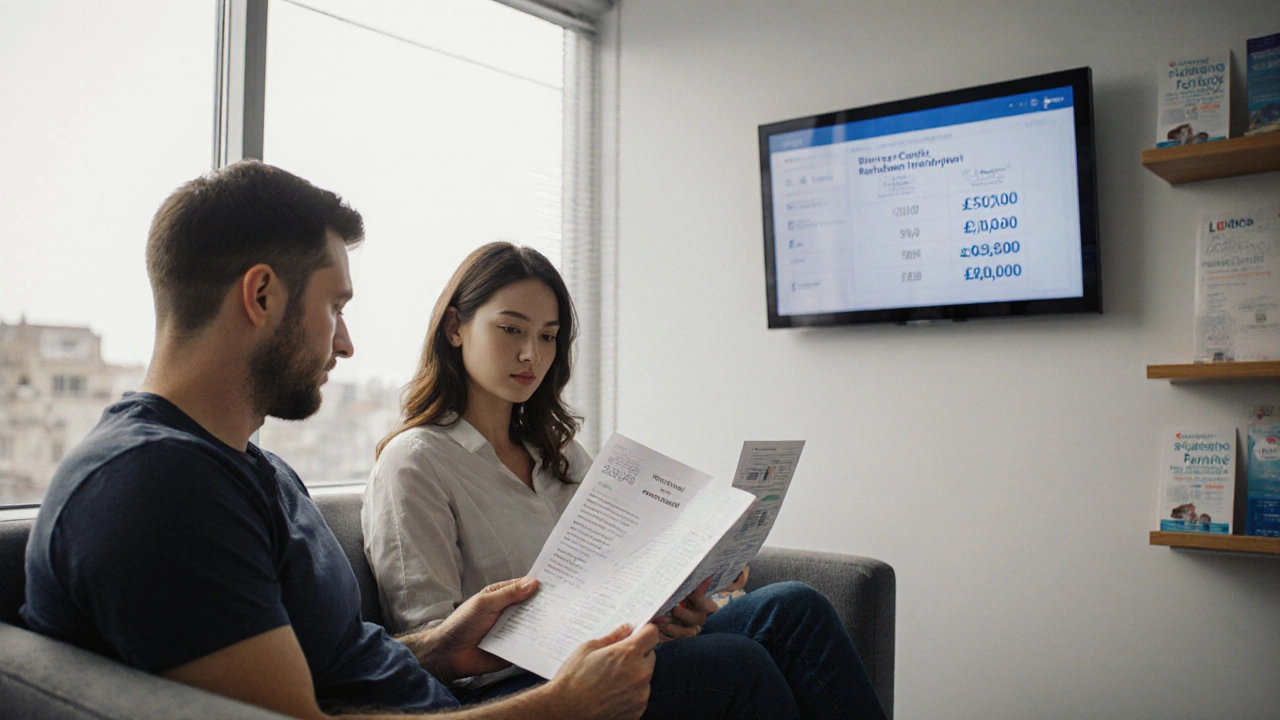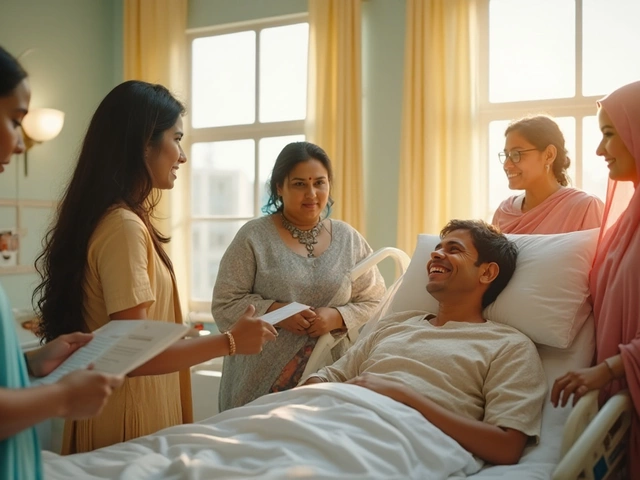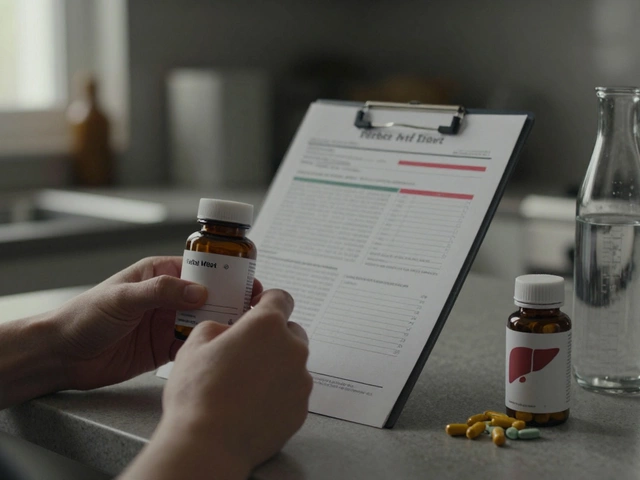
What Is IVF Cost? A Clear Breakdown of Prices in 2025
IVF Cost Calculator
Your IVF Cost Estimate
What to Expect
Tip: Most people need 2-3 cycles to achieve pregnancy.
Based on current UK IVF averages and success rates, your estimated total cost for the first cycle is shown below.
IVF isn’t cheap. If you’re asking IVF cost, you’re probably weighing whether it’s possible for you - not just medically, but financially. The truth is, there’s no single price tag. What you pay depends on where you go, how many rounds you need, what medications you use, and whether extra procedures are involved. In the UK in 2025, a single IVF cycle can range from £5,000 to £12,000. That’s before you even start counting drugs, storage, or genetic testing.
What’s Included in an IVF Cycle?
When clinics quote a price for IVF, they often mean the basic package. That usually covers: initial consultations, blood tests, ultrasound scans, egg retrieval, sperm preparation, lab fertilization, embryo culture for 3-5 days, and the embryo transfer. But that’s it. Many people assume this covers everything - it doesn’t.
Medications are the biggest surprise. Ovarian stimulation drugs like Gonal-F or Menopur can cost between £800 and £2,500 per cycle. These aren’t optional - they’re essential to produce multiple eggs. Without them, IVF doesn’t work. Some clinics include a small drug allowance, but most don’t. You’ll need to buy these separately from a pharmacy.
Other add-ons include embryo freezing (cryopreservation), which adds £500-£1,000 upfront plus £200-£400 yearly storage fees. If you need ICSI (injecting a single sperm into each egg), that’s another £1,000-£1,500. Preimplantation genetic testing (PGT) for chromosomal issues? That’s £2,000-£3,500 extra. These aren’t luxury extras - they’re often necessary for success, especially if you’re over 35 or have had previous failed cycles.
How Many Cycles Do People Actually Need?
Most people think one IVF cycle is enough. It rarely is. The NHS says the average success rate per cycle for women under 35 is about 32%. For women aged 35-37, it drops to 25%. By 40-42, it’s around 11%. That means most couples need at least two or three tries to get pregnant.
One 2024 study of over 12,000 UK IVF patients found that 68% of those under 35 needed two cycles to achieve a live birth. For women over 40, 83% needed three or more cycles. If you’re planning for success, budget for multiple rounds - not just one. That’s why many couples end up spending £15,000 to £30,000 total.
Some clinics offer multi-cycle packages. These can save you 10-20% if you pay upfront for three cycles. But read the fine print. Some only cover the procedure, not drugs. Others limit the number of embryo transfers or freeze all embryos after the first retrieval. Make sure you know exactly what’s included.
Private vs NHS IVF in the UK
The NHS offers IVF, but access is tight. Most Clinical Commissioning Groups (CCGs) now follow NICE guidelines, which say you should get up to three cycles if you’re under 40, have been trying for two years, and meet other criteria. But in practice, many areas only fund one cycle - or none at all.
Waiting times are long. Even if you qualify, you might wait 12-18 months for your first cycle. By then, your chances may have dropped. That’s why many turn to private clinics. Private clinics offer faster appointments, more control over timing, and access to advanced techniques like time-lapse embryo imaging or endometrial scratching.
But private care isn’t just about speed. It’s about options. In private clinics, you can choose your embryologist, request donor sperm or eggs more easily, and get more personalized care. You also get more transparency. Most private clinics publish their success rates, which you can compare. NHS clinics don’t always make that data easy to find.

Hidden Costs You Can’t Ignore
There are costs that don’t show up on a clinic’s price list. Travel to appointments - especially if you live outside London or major cities - adds up. Some people need to take time off work for scans and procedures. That’s lost income. Others need childcare for existing kids during appointments.
Emotional support matters too. Counselling is often recommended, and some clinics include it. Others charge £80-£120 per session. If you’re going through multiple cycles, that’s hundreds more. And if you have a failed cycle, the grief can be overwhelming. Many people seek therapy - not because they’re "broken," but because it’s a traumatic experience.
Then there’s the cost of unused embryos. If you don’t use them, you have to decide: keep paying storage fees, donate them, or let them be discarded. Each choice comes with emotional weight - and sometimes financial consequences if storage lapses.
Is IVF Worth the Cost?
There’s no easy answer. For some, the cost feels impossible. For others, it’s the only path to having a biological child. The emotional toll of infertility is real. So is the relief of holding your baby after years of trying.
One woman I spoke to spent £24,000 over three cycles. Her first two failed. The third worked. She said the money didn’t matter - what mattered was that she finally held her daughter. Another couple, after spending £18,000 and three cycles, chose adoption. They said they couldn’t afford to keep going, but they didn’t regret trying.
IVF isn’t a guarantee. But for many, it’s the best shot they have. That’s why people save for years, take second jobs, sell cars, or borrow from family. It’s not just a medical procedure - it’s a life-changing gamble.

How to Lower the IVF Cost
If you’re worried about the price, there are ways to reduce it. First, check if your employer offers fertility benefits. More UK companies now include IVF coverage as part of health packages - even if it’s just one cycle.
Second, consider clinics outside London. Prices in Manchester, Birmingham, or Leeds can be 15-25% lower than in the capital. Don’t assume the big-name clinics are the best. Success rates don’t always match the price tag.
Third, ask about payment plans. Many clinics offer interest-free instalments over 6-12 months. Some even have refund schemes - if you don’t have a baby after three cycles, you get part of your money back. These aren’t common, but they exist.
Finally, consider shared-risk programs. These let you pay a lump sum for multiple cycles. If you don’t succeed, you get a partial refund. It’s not cheap upfront, but it caps your total spending.
What’s Next?
If you’re thinking about IVF, start by getting a clear picture of your options. Talk to your GP about NHS eligibility. Visit at least two private clinics for consultations. Ask for a full breakdown of costs - not just the headline price. Write down every possible extra fee. Then make a budget that includes at least two cycles.
Don’t rush. Don’t feel pressured by timelines. IVF is expensive, yes - but it’s also deeply personal. The right choice isn’t the cheapest one. It’s the one that lets you move forward without regret.
How much does one IVF cycle cost in the UK in 2025?
A single IVF cycle in the UK typically costs between £5,000 and £12,000. This usually covers consultations, scans, egg retrieval, fertilization, and embryo transfer. Medications, embryo freezing, genetic testing, and ICSI are extra and can add £1,000 to £5,000 more.
Does the NHS pay for IVF?
The NHS may fund up to three IVF cycles if you’re under 40, have been trying to conceive for at least two years, and meet other local criteria. But in practice, most areas only fund one cycle - or none at all. Waiting times can be over a year, so many people turn to private clinics for faster access.
Why is IVF so expensive?
IVF is expensive because it involves advanced lab technology, highly trained specialists, expensive fertility drugs, and multiple medical appointments. Each cycle requires personalized care, daily monitoring, and precise lab work. The drugs alone can cost over £2,000. There’s also no guarantee of success, so clinics factor in the cost of failed cycles.
How many IVF cycles do most people need?
Most people need two to three cycles to have a baby. Success rates drop with age: under 35, about 32% per cycle; over 40, it’s closer to 11%. Studies show 68% of women under 35 need two cycles for a live birth. For those over 40, three or more cycles are common.
Are there ways to reduce IVF costs?
Yes. Check if your employer offers fertility benefits. Consider clinics outside London - prices can be 15-25% lower. Ask about payment plans or shared-risk programs where you get a refund if you don’t succeed. Some clinics offer discounts for multiple cycles paid upfront. Also, compare drug prices - buying from different pharmacies can save hundreds.

Arnav Singh
I am a health expert with a focus on medicine-related topics in India. My work involves researching and writing articles that aim to inform and educate readers about health and wellness practices. I enjoy exploring the intersections of traditional and modern medicine and how they impact healthcare in the Indian context. Writing for various health magazines and platforms allows me to share my insights with a wider audience.
Popular Articles
About
Medical Resource Center India is a comprehensive online platform dedicated to providing reliable health information and medical resources in India. Explore a wide range of articles, tips, and advice on medicine, healthcare services, and wellness. Stay informed about the latest developments in Indian medicine and access valuable insights into maintaining a healthy lifestyle. Discover expert guidance and health solutions tailored for every Indian citizen. Your go-to destination for authoritative medical knowledge in India.






